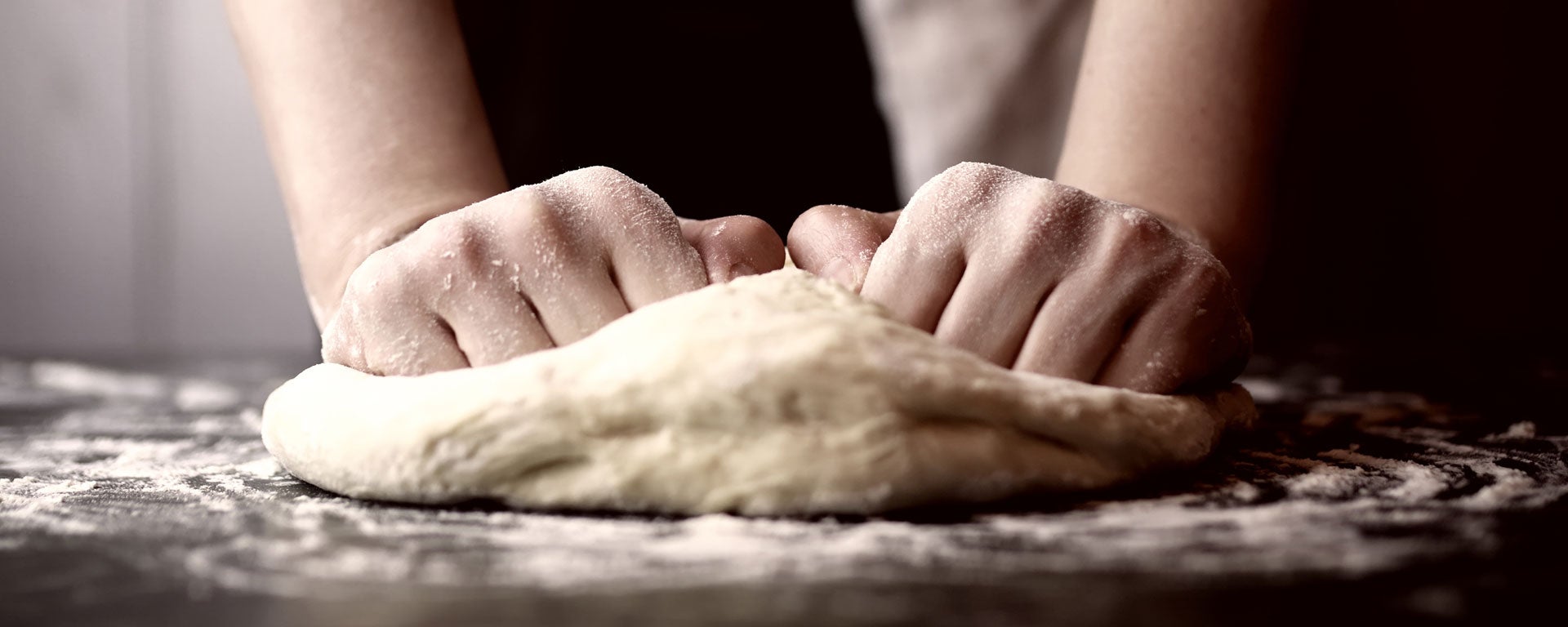Know Your Dough
Bread & Dough
Can you imagine anything nicer than the smell of freshly baked bread wafting through your own home? Bread recipes usually require just four basic ingredients: flour, water, yeast and salt, but although the ingredients may seem simple the recipe can sometimes seem intimidating. Words like knocking-back and proving can sometimes be off putting for those wanting to attempt this classic bake, so here we explain some common bread baking terms to help you rise to the occasion.
Kneading
Kneading is used to mix the ingredients together. When Flour is mixed with water the proteins form strands of gluten which gives the bread it's texture. The kneading technique warms and stretches these strands of gluten creating a light and springy dough. If the dough is not kneaded enough then the resulting loaf will be heavy and dense.
Knock-Back
After the bread has been left to rise, the dough needs to be knocked back before proving. Knocking back is the process of punching out any excess air from the dough. Removing these large air pockets will create an even texture in your loaf.
Leavened/Unleavened
Leavened Bread is bread which contains yeast or another raising agent, causing it to rise. Unleavened bread contains no yeast and is often known as a flatbread.
Proving
Proving, also known as proofing, refers to the rest period dough has after kneading. During this rest time the yeast feeds on the dough causing it to rise.
Gluten
Gluten is a mixture of two proteins that are found in the dough and responsible for giving the dough its elasticity.
Now you know the jargon, what's stopping you from giving it a go? Be inspired by our collection of bread recipes.